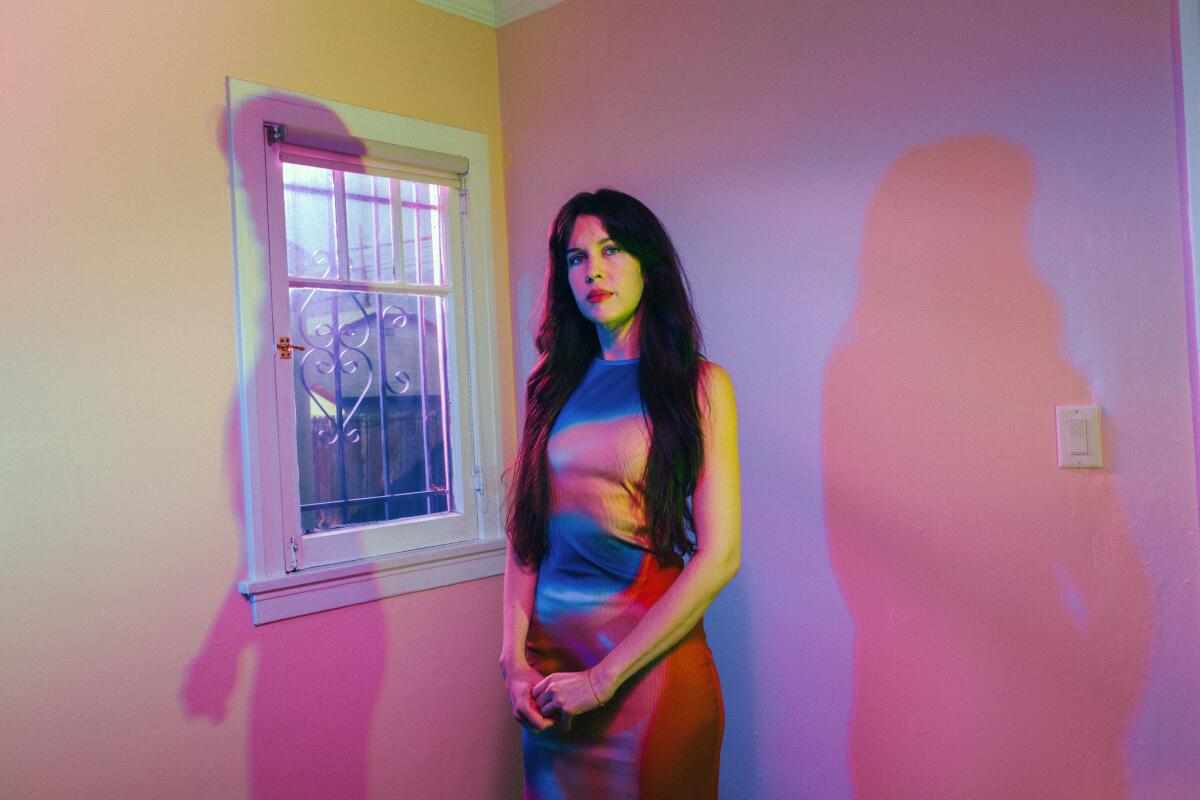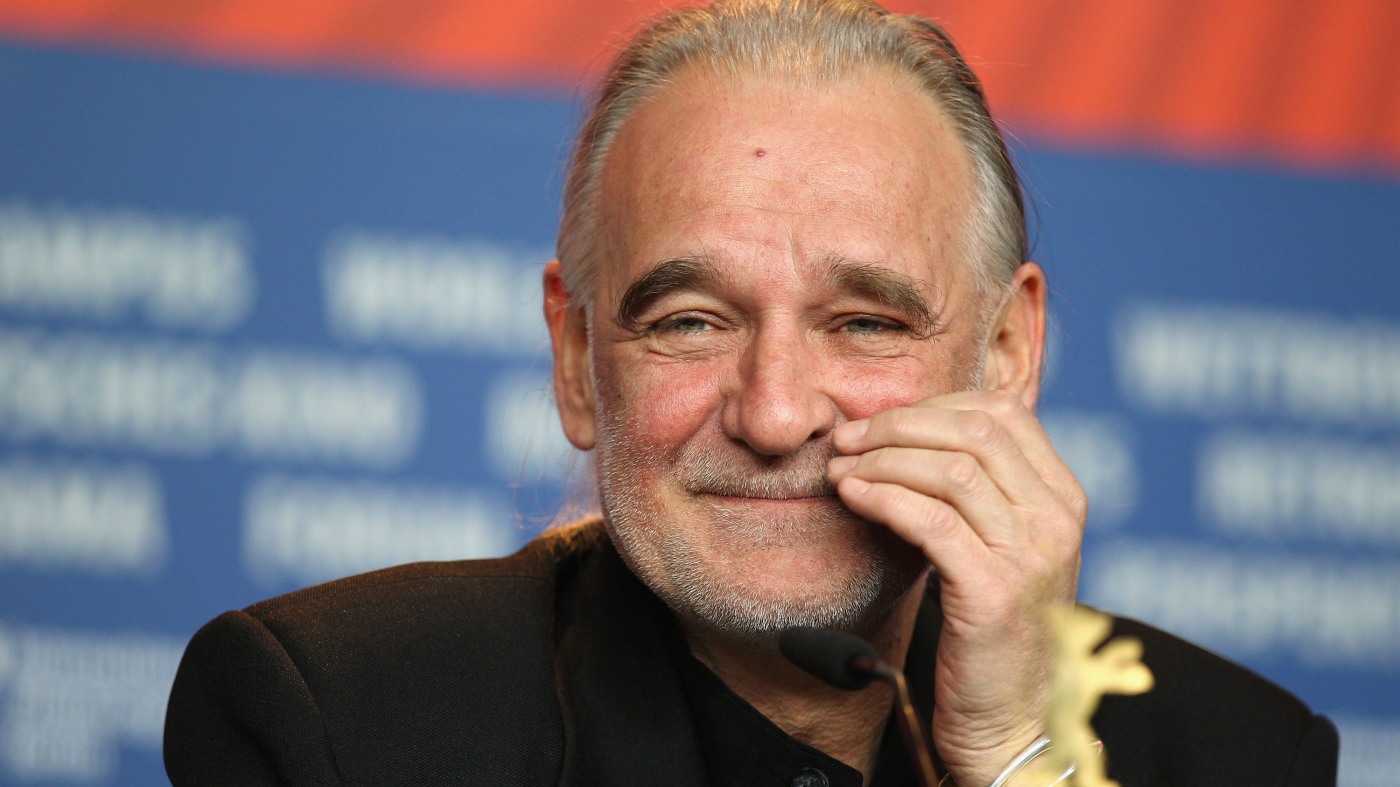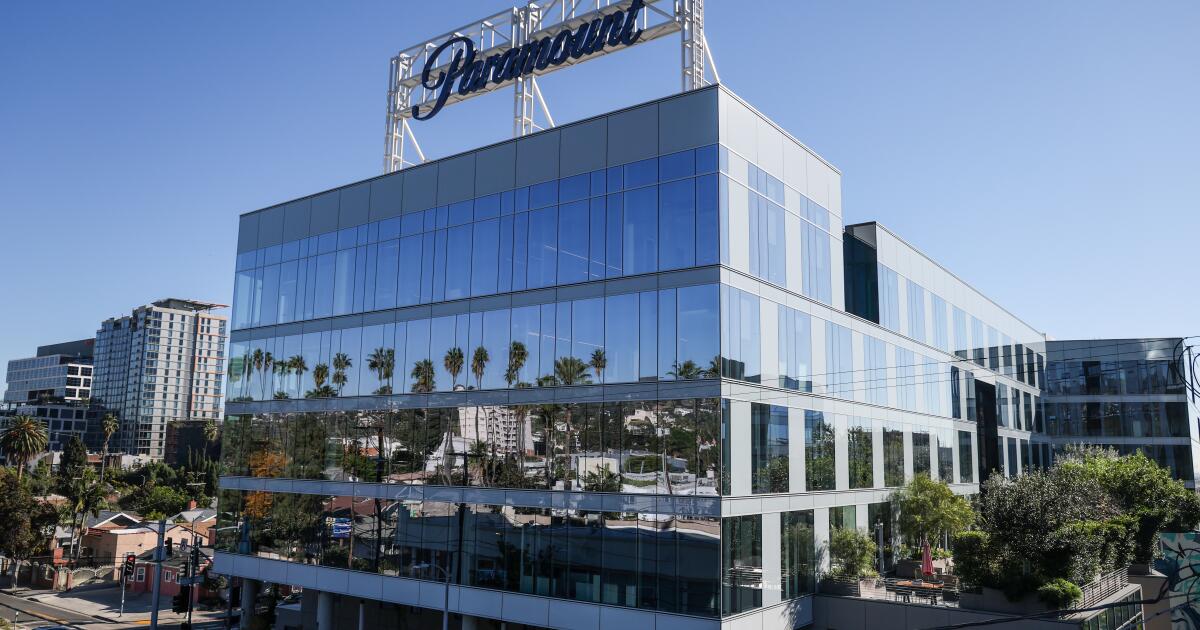Lifestyle
Meow Wolf announces its Los Angeles venue

Immersive entertainment firm Meow Wolf, whose multiple locations of floor-to-ceiling psychedelic-leaning art have attracted about 10 million visitors across its four venues since 2016, has revealed the location of its in-development Los Angeles-based exhibition.
Meow Wolf Los Angeles will be located in a portion of what is currently the Cinemark complex at Howard Hughes L.A. The rest of the multiplex is expected to remain open to moviegoers, according to a spokesperson for the Santa Fe, N.M.-based Meow Wolf.
The exhibit is expected to open in 2026.
“We’re crafting our next surreal dream world in a movie theater in West Los Angeles, a nod to the cinematic soul of the city,” said Amanda Clay, chief development officer at Meow Wolf, in a release.
“HHLA, nestled close to LAX, and just off the 405, is positioned at the convergence of abundant culture and opportunity,” Clay added in the statement. “Meow Wolf Los Angeles will draw inspiration from its surroundings and translate them into something otherworldly, never-before-seen, and yet familiar to Angelenos.”
In an interview with The Times, Meow Wolf artists said the Howard Hughes location will play into the space’s theatrical roots. The goal is to turn our city’s most ritualistic experience — that is, the act of going to the movies — into an interactive, art-driven wonderland.
Santa Fe, N.M.-based Sean Di Ianni is helping to oversee Meow Wolf’s West Los Angeles exhibit, noting it will lean into the space’s movie center roots.
(Ethan Benavidez / For The Times)
Anticipate multiple rooms of narrative-based art that strive to test perceptions, grappling with not only the stories we tell one another but why we tell them, says Meow Wolf co-founder Sean Di Ianni, 39, who is overseeing the L.A. project.
“There are stories told in movie theaters, and then there are stories of movie theaters and stories of the people who work at movie theaters,” Di Ianni said. “But when you get into that auditorium, it’s meant to be a blank space where stories are told. It’s a little meta. This is a storytelling space about storytelling.”
Like past Meow Wolf exhibitions, a significant number of installations will come from the local art community. Meow Wolf curator Han Santana-Sayles, 31, a Murrieta native who now resides in Pasadena, will lead the outreach into L.A.’s art world, a process that is in its infancy. A Meow Wolf space is a mix of elaborately designed environments and commissioned works from artists who reside in the host city.

Meow Wolf’s Han Santana-Sayles will lead the collective’s outreach into the L.A. art community.
(Ethan Benavidez / For The Times)
“I’m looking for a super broad range,” she says. “I want to include people who do wild projection mapping. But I also want to find people who do just pastels — really, really well. Or they’re painters. Or they draw. They’ve honed in on this one thing. We don’t want it to read as a theme park. We’re a contemporary arts platform.”
While Di Ianni is keeping much of the narrative a secret, he said the team envisioned as its setting “a world at a distant crossroads” in the midst of some sort of ritual.
“What if this place we’re creating has some event that occurs, and people are drawn to this event the way people are drawn to a panda being born at a zoo?” Di Ianni says.“
This exhibit,” Santana-Sayles added, “grapples with big mystical and religious questions. Not overtly, but in a way people will read themselves into. I think there’s a lot to be explored there.”
The Los Angeles location will be Meow Wolf’s sixth exhibit. Last year, the group opened a location outside of Dallas in Grapevine, Texas. A Houston exhibit is expected to open later this year. There are additional spaces in Denver, Las Vegas and Meow Wolf’s home city of Santa Fe.

Lifestyle
The Best of BoF 2025: A Year of Global Upheaval

Lifestyle
Hungarian filmmaker Béla Tarr — known for bleak, existential movies — has died

Hungarian director Béla Tarr at the Berlin International Film Festival in 2011.
Andreas Rentz/Getty Images
hide caption
toggle caption
Andreas Rentz/Getty Images
Béla Tarr, the Hungarian arthouse director best known for his bleak, existential and challenging films, including Sátántangó and Werckmeister Harmonies, has died at the age of 70. The Hungarian Filmmakers’ Association shared a statement on Tuesday announcing Tarr’s passing after a serious illness, but did not specify further details.
Tarr was born in communist-era Hungary in 1955 and made his filmmaking debut in 1979 with Family Nest, the first of nine feature films that would culminate in his 2011 film The Turin Horse. Damnation, released in 1988 at the Berlin International Film Festival, was his first film to draw global acclaim, and launched Tarr from a little-known director of social dramas to a fixture on the international film festival circuit.
Tarr’s reputation for films tinged with misery and hard-heartedness, distinguished by black-and-white cinematography and unusually long sequences, only grew throughout the 1990s and 2000s, particularly after his 1994 film Sátántangó. The epic drama, following a Hungarian village facing the fallout of communism, is best known for its length, clocking in at seven-and-a-half hours.
Based on the novel by Hungarian writer László Krasznahorkai, who won the Nobel Prize in Literature last year and frequently collaborated with Tarr, the film became a touchstone for the “slow cinema” movement, with Tarr joining the ranks of directors such as Andrei Tarkovsky, Chantal Akerman and Theo Angelopoulos. Writer and critic Susan Sontag hailed Sátántangó as “devastating, enthralling for every minute of its seven hours.”
Tarr’s next breakthrough came in 2000 with his film Werckmeister Harmonies, the first of three movies co-directed by his partner, the editor Ágnes Hranitzky. Another loose adaptation of a Krasznahorkai novel, the film depicts the strange arrival of a circus in a small town in Hungary. With only 39 shots making up the film’s two-and-a-half-hour runtime, Tarr’s penchant for long takes was on full display.
Like Sátántangó, it was a major success with both critics and the arthouse crowd. Both films popularized Tarr’s style and drew the admiration of independent directors such as Jim Jarmusch and Gus Van Sant, the latter of which cited Tarr as a direct influence on his films: “They get so much closer to the real rhythms of life that it is like seeing the birth of a new cinema. He is one of the few genuinely visionary filmmakers.”
The actress Tilda Swinton is another admirer of Tarr’s, and starred in the filmmaker’s 2007 film The Man from London. At the premiere, Tarr announced that his next film would be his last. That 2011 film, The Turin Horse, was typically bleak but with an apocalyptic twist, following a man and his daughter as they face the end of the world. The film won the Grand Jury Prize at the Berlin International Film Festival.
After the release of The Turin Horse, Tarr opened an international film program in 2013 called film.factory as part of the Sarajevo Film Academy. He led and taught in the school for four years, inviting various filmmakers and actors to teach workshops and mentor students, including Swinton, Van Sant, Jarmusch, Juliette Binoche and Gael García Bernal.
In the last years of his life, he worked on a number of artistic projects, including an exhibition at a film museum in Amsterdam. He remained politically outspoken throughout his life, condemning the rise of nationalism and criticizing the government of Hungarian leader Viktor Orbán.
Lifestyle
Epic stretch of SoCal rainfall muddies roads, spurs beach advisories. When will it end?

California’s wet winter continued Sunday, with the heaviest rain occurring into the evening, and more precipitation forecast for Monday before tapering off on Tuesday, according to the National Weather Service.
A flood advisory was in effect for most of Los Angeles County until 10 p.m.
Los Angeles and Ventura counties’ coastal and valley regions could receive roughly half an inch to an inch more rain, with mountain areas getting one to two additional inches Sunday, officials said. The next two days will be lighter, said Robbie Munroe, a meteorologist at the weather service office in Oxnard.
Rains in Southern California have broken records this season, with some areas approaching average rain totals for an entire season. As of Sunday morning, the region had seen nearly 14 inches of rain since Oct. 1, more than three times the average of 4 inches for this time of year. An average rain season, which goes from July 1 to June 30, is 14.25 inches, officials said.
“There’s the potential that we’ll already meet our average rainfall for the entire 12-month period by later today if we end up getting half an inch or more of rain,” Munroe added.
The wet weather prompted multiple road closures over the weekend, including a 3.6-mile stretch of Topanga Canyon Boulevard between Pacific Coast Highway and Grand View Drive as well as State Route 33 between Fairview Road and Lockwood Valley Road in the Los Padres National Forest. The California Department of Transportation also closed all lanes along State Route 2 from 3.3 miles east of Newcomb’s Ranch to State Route 138 in Angeles National Forest.
Los Angeles County Department of Public Health officials say beachgoers should stay out of the water to avoid the higher bacteria levels brought on by rain.
After storms, especially near discharging storm drains, creeks and rivers, the water can be contaminated with E. coli, trash, chemicals and other public health hazards.
The advisory, which will be in effect until at least 4 p.m. Monday, could be extended if the rain continues.
In Ventura County on Sunday, the 101 Freeway was reopened after lanes were closed due to flooding Saturday. But there was at least one spinout as well as a vehicle stuck in mud on the highway Sunday, according to the National Weather Service. The freeway was also closed Saturday in Santa Barbara County in both directions near Goleta due to debris flows but reopened Sunday, according to Caltrans.
Santa Barbara Airport reopened and all commercial flights and fixed-wing aircraft were cleared for normal operations Sunday morning. The airport had shut down and grounded all flights Saturday due to flooded runways.
In Orange County early Sunday afternoon, firefighters rescued a man clinging to a section of a tunnel in cold, fast-moving water in a storm channel at Bolsa Avenue and Goldenwest Street in Westminster, according to fire officials.
A swift-water rescue team deployed a helicopter, lowered inflated firehoses and positioned an aerial ladder to allow responders to secure the man and bring him to safety before transporting him to a hospital for evaluation.
Heavy rains continued to batter Southern California mountain areas. Wrightwood in San Bernardino County — slammed recently with mud and debris — was closed Sunday except to residents as heavy equipment was brought in to clear mud and debris from roadways, the news-gathering organization OnScene reported.
After canceling live racing on New Year’s Eve and New Year’s Day due to heavy showers, Santa Anita Park also called off events Saturday and Sunday.
After several atmospheric river systems have come through, familiar conditions are set to return to the region later this week.
“We’ll get a good break from the rain and it’ll let things dry out a little bit, and we may even be looking at Santa Ana conditions as we head into next weekend,” Munroe said. The weather will likely be “mostly sunny” and breezy in the valleys and mountains.
-

 World1 week ago
World1 week agoHamas builds new terror regime in Gaza, recruiting teens amid problematic election
-

 News1 week ago
News1 week agoFor those who help the poor, 2025 goes down as a year of chaos
-

 Science1 week ago
Science1 week agoWe Asked for Environmental Fixes in Your State. You Sent In Thousands.
-

 Business1 week ago
Business1 week agoA tale of two Ralphs — Lauren and the supermarket — shows the reality of a K-shaped economy
-

 Politics1 week ago
Politics1 week agoCommentary: America tried something new in 2025. It’s not going well
-

 Politics1 week ago
Politics1 week agoMarjorie Taylor Greene criticizes Trump’s meetings with Zelenskyy, Netanyahu: ‘Can we just do America?’
-

 Detroit, MI4 days ago
Detroit, MI4 days ago2 hospitalized after shooting on Lodge Freeway in Detroit
-

 Health1 week ago
Health1 week agoRecord-breaking flu numbers reported in New York state, sparking warnings from officials

















